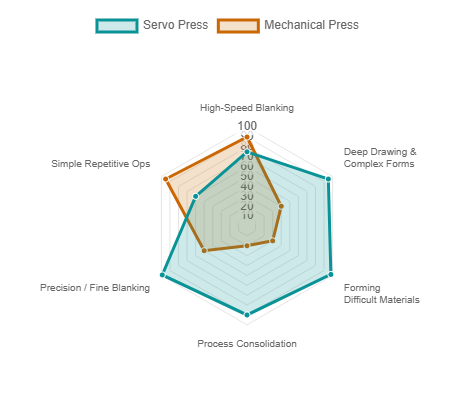The Ultimate Guide to Selecting the Right Clutch-Brake Combination for Mechanical Presses 1
- Emrah Demirezen

- Apr 23, 2024
- 2 min read
Updated: Apr 27, 2024
Clutch-brake systems play a vital role in the operation of mechanical presses, serving as essential components for controlling motion, precision, and safety. In this article, we'll delve into the intricacies of clutch-brake systems, exploring their functionality, types, applications, and key considerations for selection and maintenance.
Clutch-brake systems in mechanical presses are responsible for engaging and disengaging the power transmission to the press's drive system. They facilitate precise control over the press stroke, enabling operators to start, stop, and regulate the speed of the press accurately. By combining both clutch and brake functions, these systems ensure efficient operation and enhance productivity in stamping processes.

Types of Clutch-Brake Systems:
Mechanical Clutch-Brakes:
Functionality: Mechanical clutch-brakes utilize mechanical linkages, such as cams and levers, to engage and disengage the clutch and brake mechanisms. They typically employ friction surfaces and springs to transfer torque and absorb energy during operation.
Advantages: Known for their simplicity, reliability, and ease of maintenance. Mechanical systems offer precise control over engagement and disengagement, making them suitable for a wide range of stamping applications.
Applications: Commonly used in medium-speed stamping presses for applications where consistent performance and durability are essential.
Pneumatic Clutch-Brakes:
Functionality: Pneumatic clutch-brakes utilize compressed air to actuate the clutch and brake mechanisms. They employ air pressure to engage friction surfaces, providing fast response times and precise control over the press stroke.
Advantages: Fast response times make pneumatic systems ideal for high-speed stamping operations where rapid cycling is required. They offer minimal energy consumption and can be easily integrated into automated press lines.
Applications: Widely used in automotive and electronics industries for high-speed stamping processes requiring quick tool changes and precise control over press cycles.
Hydraulic Clutch-Brakes:
Functionality: Hydraulic clutch-brakes utilize hydraulic fluid to control the clutch and brake functions. They employ hydraulic pressure to engage and disengage friction surfaces, offering precise control over force and torque transmission.
Advantages: Hydraulic systems provide high force and torque capacities, making them suitable for heavy-duty stamping applications. They offer smooth and consistent performance, with the ability to adjust engagement characteristics as needed.
Applications: Commonly used in large-tonnage stamping presses for forming thick or high-strength materials in industries such as aerospace, construction, and heavy machinery manufacturing.
Each type of clutch-brake system has its unique advantages and applications, and the choice depends on factors such as speed requirements, force capacity, precision, and operational preferences of the stamping process. Manufacturers should carefully evaluate these factors to select the most suitable clutch-brake system for their specific stamping applications.
Key Considerations for Selection: When choosing a clutch-brake system for a mechanical press, several factors must be taken into account:
Load capacity: Ensure the system can handle the maximum force and torque requirements of the stamping process.
Response time: Consider the required speed and responsiveness of the system to meet production demands.
Maintenance requirements: Assess the ease of maintenance and availability of spare parts to minimize downtime.
Safety features: Look for features such as overload protection and emergency stop functionality to ensure operator safety.
Contact us for consultancy
Emrah Demirezen
Metal Forming Expert & Press Designer



Comments